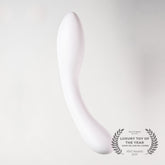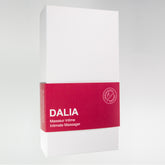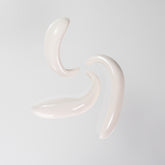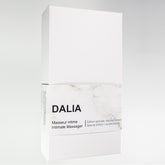What’s the Deal with Crystal Sex Toys?
What You Should Know Before Buying a Crystal Sex Toy
Perhaps you’ve heard about it; sex toys (mostly dildo and yoni egg) made from crystals and natural stones are pretty popular at the moment. They are often sold as devices with esoteric properties like being healing, protective, grounding, etc. Our goal here isn’t to debate the beliefs surrounding crystals, but to discuss their physical properties. Because if you are like us, you may be wondering if these types of toys are body-safe.
➡️ Learn About Body-Safe and Toxic Materials for Sex Toys
Interview with Lithologie
At Désirables, we know a lot about porcelain and ‘’classic’’ sex toy materials, but we are not experts when it comes to stones and crystals. That’s why we asked our friends at Lithologie what were their take on the subject!
Lithologie is a Montreal-based company that specializes in the revitalization of Quebec’s natural stones. They create beautiful whiskey stones made from rocks that are thousands of years old.
Similar to Désirables, Lithologie’s mission is to create whiskey stones (and other food products) that have the highest sanitary standards. Unlike most whiskey stones on the market, Lithologie’s stones are non-porous and therefore ensure impeccable hygiene (and taste) to your drink. By having a chat with these ‘’stones pro’’, we wanted to evaluate the various sanitary and safety aspects of the natural stones that are currently sold for internal use.
Most crystal sex toys sold on the market are made either from quartz, jade, amethyst or obsidian.
Could you tell us more about the stability of these crystals?
Quartz, amethyst and jade have high levels of hardness (approximately 7/10 on the Mohs’ scale), as well as a great resistance to weathering. Therefore, we can consider these crystals as stable. Obsidian, on the other hand, is rated 5-6 on this scale, so it wouldn't be our first choice in terms of stability!
Side note on quartz: one of the problems comes from its many cleavage planes that are naturally inside the stone. What this means is that this type of crystal naturally has fracture planes within its structure and there is therefore a possibility that it will eventually break.
💎 Are the usually used crystals porous?
Amethyst (which is actually a purple quartz), quartz, jade and obsidian are usually the stones that we find on the sex toys market. Thankfully, these are not crystals that are considered to be porous. So, if we were to only take this characteristic into consideration, there wouldn’t be any reason not to use them. Whatmore, when manufacturers produce these types of objects, such as dildos and other toys, we can assume that they use singular large crystals. If that’s the case, we can neglect the aspect of porosity as it is a single crystal.
👉 Although we do have to mention that various levels of quality exist when it comes to natural stones and crystals. This is the case for jade. Indeed, the jade known as jadeite is much more accessible than the jade of the nephrite variety, but it is also much more porous. It will either be the manufacturer’s job to be transparent or the job of the customer to make the proper research regarding this matter. It will be important to look into the geochemical origin of the jade, especially if it is being sold at a high price. I believe there is a higher chance that it is the more affordable version of jade that is being used in the context of sex toys.
⛏️ Crystals are natural resources extracted from the ground, should we make the same ethical evaluation regarding their origin like we do with diamonds?
For sure! Both in terms of where they came from (and the impact of transport to get to you) and the working and environmental conditions where they were extracted and processed. According to an article published bythe Metro UK: ''These mines, depending on the part of the world they’re located and the way they’re run, can be rife with child labour, unsafe working conditions, and low pay.’’ It is therefore essential to make sure that the manufacturer has measures in place to ensure the ethical provenance of its raw materials.

What about counterfeit crystals?
Yes, you do have to watch out for them. Amethyst that are really purple - like unrealistically purple - are actually quartz that were dyed, because it is much cheaper to produce. Unfortunately, people who do not have a lot of knowledge about natural stones can’t usually tell the difference. Which means they end up paying way too much, as they are made to believe that they are buying an amethyst!
Agates, too, have long been and still are counterfeit, especially when the verifications have not been made properly. They are altered through various colorization processes in order to dye only one series of rings with one dye, another series of rings with another, etc. In the end, it gives surrealist agates which are counterfeit. As for other semi-precious stones, it sometimes happens that manufacturers dye white quartz to pink.
❤️ We would like to thank Lithologie for taking the time to answer our questions! Keep reading for more information on natural stones and our conclusion on the subject matter!

What is Quench Crackling?
The Gemological Institute of America explains that quartz, pink quartz and amethyst are usually not porous stones, because they are in the monocrystalline category. But, many factors can affect their porosity and quench crackling is one of them.
This technique, used to enhance the crystals and stones’ appearance, consists of heating them to very high temperatures and then immersing them in cold water to create cracks. The stones are then submerged into a dye tank where the cracks absorb said dye, which results in a change of color. Afterwards, the cracks are usually filled with polymers (broad term that can group together many materials, these are generally not biocompatible). This process leads us to believe that a crystal that has undergone quench crackling would not be safe for internal use.
So, is it safe to use these products as sex toys?
There is unfortunately no easy answer, because as it goes with ‘’regular’’ sex toys it is the manufacturer who have the responsibility to be transparent and to use body-safe materials. Indeed, there are no governmental regulations when it comes to sex toys.
We do have to mention that most of the toys made from stones should not be porous due to their fabrication process, but this doesn’t necessarily mean that they are body-safe. The stability (which can be verified with Mohs’ scale) of the stone is another crucial aspect as well as the ethical origin. You should also be aware of counterfeit stones and crystals.
Conclusion
If you already own a crystal toy, no need to throw it in the trash. But most experts agree on the fact that you should use a condom when using this type of sex toys to avoid any unwanted transfer of bacterias from the stone to you. Regarding Yoni eggs… it is definitely harder to use them with a condom, we would recommend you buy this type of product in a safer material, such as medical silicone. Although the actual physical benefits of using such a product still needs to be demonstrated compared to classic pelvic floor exercises.
We do have to admit that - just like marble - we love the look of pink quartz! That’s why we launched a porcelain dildo with a quartz effect with Génération Sidechick. Porcelain benefits with the quartz beautiful colors? Yes, please!
Sources
https://metro.co.uk/2018/06/05/crystal-dildos-bad-environment-genitals-7606500/
https://www.ankora.fr/blogs/bien-etre-et-spiritualite/oeuf-de-yoni-risque-danger
https://www.e-sante.fr/perinee-les-dangers-des-oeufs-de-yoni/actualite/616051
https://www.womenshealthmag.com/sex-and-love/a27335486/crystal-dildo-safety/
https://www.kiiroo.com/blogs/articles/are-crystal-gemstone-dildos-dangerous
https://fr.wikipedia.org/wiki/%C3%89chelle_de_Mohs
https://www.gemsociety.org/article/identifying-jade-treatments/
https://www.pitt.edu/~cejones/GeoImages/1Minerals/1IgneousMineralz/Quartz.html
https://www.gemporia.com/en-gb/learning-library/terms/quenched%20crackle/






